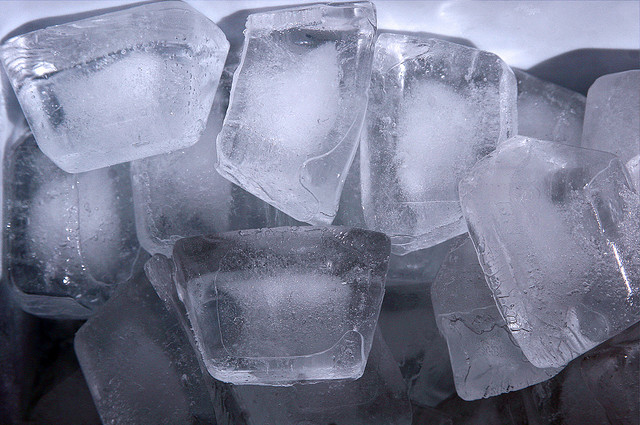
Refrigerators that dispense water and produce ice are probably among of the greatest appliances invented during the 20th century. It’s such a fantastic luxury to get cold water, ice cubes and deli meat all from the same location. That’s why it’s such a downer when ice production slows down or the water dispenser takes 10 minutes to fill a cup. If you refrigerator’s ice maker or water dispenser has been letting you down recently, these tips can help you fix the problem without calling an expert.
What To Do If Your Water Line Is Slow
- Check your owner’s manual to find out if your water line really is slow. If you have recently switched to a new brand of refrigerator, the water line may be functioning properly, even if it runs slower than your older brand of refrigerator. For a GE refrigerator, the normal expectation is to fill an 8 ounce glass in 8 to 10 seconds time. Different brands may have different expectations.
- Look for kinks in the water line. The water line will appear at the back of your refrigerator. The line should not be pinched at any location, nor should it be bent.
- Check the local water supply to ensure that the water to the refrigerator is turned on. If your refrigerator was recently installed, the water line may not have been fully opened when the installation was finished. If your refrigerator was installed many years ago, this is likely not the problem unless the refrigerator was recently uninstalled and reinstalled in a new location.
- Replace the filter to your water line, if your refrigerator has one. If the filter is old and in need of replacing, your refrigerator may have an indicator light that alerts you to this fact.
What To Do If Your Ice Maker Is Slow
Your refrigerator’s ice maker depends on water from a water line, so many of the same problems that can impact your refrigerator’s water dispenser can also affect the ice maker. As in the case with the slow water line, you’ll want to check to see if the amount of ice being produced is slower than what’s expected for the model. Different refrigerator/freezers will produce ice at different rates.
- Look for a kink in the water line located at the back of the refrigerator. Check along the entire length of the line.
- Check the local water supply valve to ensure that the valve is fully in the “on” position.
- Replace the water filter, if your refrigerator model has a filter that has not been replaced recently.
- Check the temperature in the freezer with a refrigerator thermometer, The owner’s manual will indicate what temperature is necessary for ice production. If the temperature is too high, this could slow ice production, or cause it to cease altogether.
Resources
For more information on this subject, check out these online resources:
- GE’s video about fixing a slow water line.
- Amana FAQ with suggestions for repairing a slow ice dispenser.
When in doubt, check the “troubleshooting” section of the refrigerator’s owner’s manual. If you no longer have the owner’s manual, look for a copy online. Many companies put the owner’s manuals for their products on their website, and even if they don’t, sometimes people who have purchased the products will do so independently.
If you’re unable to find the source of the problem yourself, there could be something wrong with your pip or with the refrigerator itself. Contact an appliance repair person or a trusted plumber for more help. Residents of the Pittsburgh area in need of a certified plumber to repair the plumbing that services the refrigerator can contact Terry’s Plumbing.
 (412) 364-9114
(412) 364-9114
